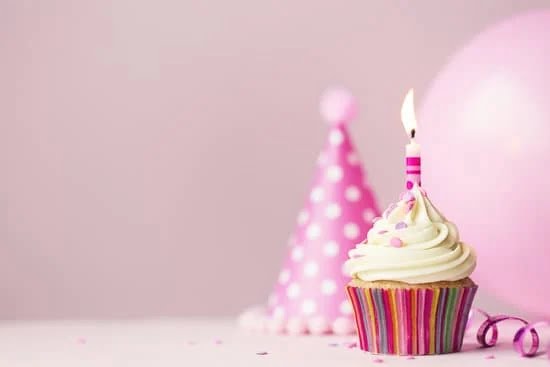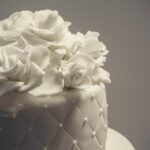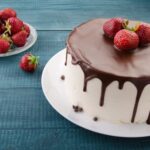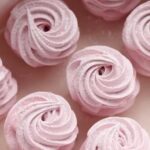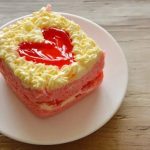Buttercream frosting for cake decorating has been a staple in the baking world for centuries, adding sweetness and elegance to any baked creation. This creamy, smooth, and versatile frosting can be used to create intricate designs and add a burst of flavor to your cakes. Whether you’re a seasoned baker or just starting out, mastering the art of buttercream frosting is essential for creating stunning and delicious desserts.
The history and origins of buttercream frosting can be traced back to Europe in the 17th century, where it was first used in royal kitchens to decorate elaborate pastries and desserts. Over time, different variations of buttercream frosting have emerged, each with its own unique texture and flavor profile. From classic American buttercream to silky Swiss meringue buttercream, the possibilities are endless when it comes to choosing the perfect type of buttercream for your cake decorating needs.
In this article, we will delve into the world of buttercream frosting, exploring its rich history, various types and their uses, essential ingredients for making it from scratch, as well as providing you with a step-by-step guide on how to achieve the perfect consistency. Additionally, we will share tips and tricks for decorating cakes with buttercream frosting, offer flavor variations and add-ins to elevate your creations, and troubleshoot common issues that may arise during the frosting process.
So whether you’re looking to master classic piping techniques or experiment with new flavors, this comprehensive guide will help you unlock the full potential of buttercream frosting in cake decorating.
The History and Origins of Buttercream Frosting
Buttercream frosting has been a beloved addition to cakes and pastries for centuries, with a rich history and fascinating origins. The roots of buttercream frosting can be traced back to Europe, where it was first created in the mid-17th century. Its popularity quickly spread across the continent, eventually making its way to America and other parts of the world.
European Origins
In Europe, buttercream frosting was initially made using a simple combination of butter and sugar, creating a smooth and creamy icing that was perfect for adorning baked goods. As culinary techniques evolved, different variations of buttercream frosting emerged in various European countries, each with its own unique twist on the classic recipe.
French Influence
The French were instrumental in refining buttercream frosting into the luxurious and versatile icing we know today. They introduced techniques such as Swiss meringue and Italian meringue to create a lighter and airier frosting that could be piped and shaped with ease.
American Adaptations
When buttercream frosting made its way to America, bakers put their own spin on the classic recipe. American buttercream became known for its sweet and rich flavor, often incorporating vanilla extract or other flavorings to enhance its taste. Over time, American bakers also began experimenting with different types of buttercream, leading to the development of options such as cream cheese buttercream and chocolate buttercream.
Understanding the history and origins of buttercream frosting not only provides insight into its cultural significance but also offers inspiration for incorporating traditional techniques into modern cake decorating practices. Whether you prefer a classic European-style buttercream or an innovative American adaptation, exploring the origins of this beloved icing can add depth and authenticity to your cake decorating endeavors.
Types of Buttercream Frosting and Their Uses
When it comes to cake decorating, choosing the right type of buttercream frosting is essential to achieving the desired look and taste. There are several different types of buttercream frosting, each with its own unique characteristics and uses. Here are some of the most popular types of buttercream frosting and their respective uses:
1. American Buttercream: This type of buttercream is the simplest to make and is perfect for beginners. It is made with butter, powdered sugar, vanilla extract, and a small amount of milk or cream. American buttercream is great for spreading on cakes and cupcakes, as well as for piping borders and basic decorations.
2. Swiss Meringue Buttercream: Made by whisking together egg whites and granulated sugar over a double boiler before adding in softened butter, Swiss meringue buttercream has a silky smooth texture and is less sweet than American buttercream. It’s ideal for covering cakes with a smooth finish and creating intricate piped designs.
3. Italian Meringue Buttercream: Similar to Swiss meringue buttercream, Italian meringue buttercream is made by heating sugar into a syrup before mixing it into whipped egg whites. The result is a stable, creamy frosting that’s perfect for elaborate cake decorations and sculpting.
4. French Buttercream: Made with egg yolks instead of egg whites, French buttercream has a rich flavor and velvety texture. It’s best suited for filling layer cakes or as a luxurious topping for desserts like tarts or eclairs.
Each type of buttercream frosting has its own set of advantages and can be used to achieve different decorative effects on cakes and other baked goods.
Essential Ingredients for Making Buttercream Frosting
Buttercream frosting is a staple in cake decorating, known for its smooth texture and ability to hold its shape when piped. To create the perfect buttercream frosting, it’s crucial to use the right ingredients. Here are the essential elements needed to make delicious buttercream frosting for cake decorating:
Butter
One of the primary ingredients in buttercream frosting is, of course, butter. Unsalted butter is typically used to give the frosting a rich, creamy flavor without adding additional salt. It’s important to ensure that the butter is at room temperature before creaming it with other ingredients to achieve a smooth and lump-free consistency.
Powdered Sugar
Powdered sugar, also known as confectioner’s sugar or icing sugar, is another key component in making buttercream frosting. Its fine texture helps create a smooth and creamy consistency while adding sweetness to the frosting. Be sure to sift the powdered sugar before adding it to prevent lumps in the final product.
Vanilla Extract
Vanilla extract enhances the flavor of buttercream frosting and adds a subtle sweetness. Pure vanilla extract is recommended for the best flavor, but artificial vanilla can also be used if desired. The amount of vanilla extract can be adjusted based on personal preference or complementing the cake’s flavor.
In addition to these main ingredients, some recipes may call for milk or heavy cream to adjust the consistency of the frosting. Some decorators also incorporate salt to balance out sweetness or meringue powder for stability when piping intricate designs. By using high-quality ingredients and following a reliable recipe, anyone can achieve a delectable and versatile
Step-by-Step Guide to Making the Perfect Buttercream Frosting
Making the perfect buttercream frosting for cake decorating is not as difficult as it may seem. With the right ingredients and a step-by-step guide, you can achieve a smooth, creamy and delicious buttercream that will elevate your cake decorating to the next level.
To make the perfect buttercream frosting, you will need the following essential ingredients:
- Butter: Unsalted and at room temperature
- Confectioners’ sugar: Also known as powdered sugar
- Vanilla extract: For flavor
- Heavy cream or milk: To adjust the consistency of the frosting
Once you have gathered all the necessary ingredients, follow these simple steps to make the perfect buttercream frosting:
- Cream the butter: In a mixing bowl, beat the room temperature butter until smooth and creamy.
- Add confectioners’ sugar: Gradually add in the confectioners’ sugar, beating well after each addition.
- Incorporate flavoring and liquid: Mix in the vanilla extract and add heavy cream or milk as needed to achieve your desired consistency.
Following these steps will result in a velvety smooth and luscious buttercream frosting that is ready to be used for decorating your cakes. Whether you’re piping delicate flowers or creating intricate designs, this buttercream frosting will hold its shape while adding a delicious touch to your baked creations.
Tips and Tricks for Decorating Cakes With Buttercream Frosting
Decorating a cake with buttercream frosting can seem like a daunting task, but with the right tips and tricks, it can be an enjoyable and rewarding experience. One important tip is to make sure that your cake is completely cooled before you start decorating. This will ensure that the buttercream frosting adheres well to the cake and doesn’t melt or slide off.
Another helpful trick is to use a turntable when decorating your cake. A turntable allows you to easily spin the cake as you decorate, making it much simpler to achieve smooth and even layers of buttercream. It also helps you create clean lines and intricate designs on the cake’s surface.
When it comes to piping buttercream frosting onto a cake, using the right tools can make all the difference. Investing in a set of high-quality piping tips can help you achieve professional-looking results. Different tips can create various textures and patterns, allowing for endless creativity in decorating cakes with buttercream frosting.
A helpful technique for achieving a smooth finish on a buttercream-frosted cake is called the “bench scraper method.” This involves using a bench scraper or straight edge tool to gently smooth out the frosting around the sides of the cake, creating clean, sharp edges. Practice makes perfect when it comes to cake decorating, so don’t be afraid to experiment with different techniques and have fun with your creations.
| Tip/Trick | Description |
|---|---|
| Cool Cake Completely | This ensures that the buttercream frosting adheres well to the cake. |
| Use a Turntable | A turntable makes it easier to achieve smooth and even layers of buttercream, as well as create clean lines and intricate designs. |
| Invest in Piping Tips | A set of high-quality piping tips can help achieve professional-looking results. |
| Bench Scraper Method | Using this method creates a smooth finish on a buttercream-frosted cake by gently smoothing out the frosting around the sides. |
Flavor Variations and Add-Ins for Buttercream Frosting
Buttercream frosting is a versatile and delicious option for cake decorating, and one of the best things about it is the endless possibilities for flavor variations and add-ins. By getting creative with different flavors and mix-ins, you can take your buttercream frosting to the next level and create unique and delectable cakes that will impress everyone.
One popular flavor variation for buttercream frosting is chocolate. Adding cocoa powder or melted chocolate to your buttercream frosting can turn it into a rich and decadent chocolate frosting that is perfect for any chocolate lover. You can also experiment with different types of chocolate, such as dark, milk, or white chocolate, to create a variety of flavors.
Another classic flavor option is vanilla. You can enhance the vanilla flavor by using vanilla extract or vanilla bean paste in your buttercream frosting. For a more gourmet touch, consider adding other complementary flavors such as almond extract or bourbon to create a sophisticated twist on traditional vanilla buttercream.
In addition to flavor variations, you can also incorporate add-ins into your buttercream frosting to add texture and visual interest to your cakes. Popular add-ins include chopped nuts, crushed cookies, sprinkles, shredded coconut, or even fruit purees. These additions not only enhance the flavor of the frosting but also add a delightful crunch or chewiness that takes the overall cake experience to another level.
| Buttercream Flavor | Additional Ingredients |
|---|---|
| Chocolate | Cocoa powder, melted chocolate |
| Vanilla | Vanilla extract/paste, almond extract, bourbon |
| Fruit-flavored | Fruit purees (strawberry, raspberry) |
Troubleshooting Common Buttercream Frosting Issues
Even with the best of intentions and careful preparation, sometimes things can go wrong when making buttercream frosting for cake decorating. It’s important to be prepared for potential hiccups so that you can troubleshoot and fix the issues as they arise. Here are some common problems you might encounter when making buttercream frosting and how to address them.
One common issue is the buttercream frosting being too runny or thin. This can happen if the butter was too soft when added to the mixture or if too much liquid was incorporated. To fix this, try refrigerating the frosting for 15-30 minutes to help it firm up. If it’s still too thin, slowly add in more powdered sugar until you reach your desired consistency.
On the other hand, stiff or dry buttercream frosting can also be problematic. This may occur if too much powdered sugar was added or if the frosting was over-mixed. To remedy this, try adding a small amount of milk or cream to soften the frosting. Be sure to incorporate it slowly and mix well before adding more liquid, as you don’t want to end up with runny frosting.
Air bubbles in buttercream frosting can create an uneven and unattractive texture on your decorated cakes. To prevent this issue, use a paddle attachment on your mixer instead of a whisk attachment when mixing your ingredients. You can also gently tap the bowl of frosting on the counter to release any trapped air bubbles. If air bubbles still appear on your cake after decorating, simply use a small spatula or toothpick to smooth them out.
By being aware of these common buttercream frosting issues and knowing how to troubleshoot them, you’ll be better equipped to create beautiful and delicious cakes for any occasion using buttercream frosting for cake decorating.
Conclusion
In conclusion, buttercream frosting is a versatile and beautiful option for cake decorating that has been used for centuries. Its creamy texture and ability to hold intricate designs make it a go-to choice for both amateur and professional bakers alike. From simple birthday cakes to elegant wedding cakes, buttercream frosting can elevate any dessert to a work of art.
The history and origins of buttercream frosting reveal its longstanding popularity and the skillful techniques that have been developed over time. With various types of buttercream frosting available, including American, Swiss, Italian, and French, there are endless possibilities for creating different textures and flavors to suit any cake decorating need.
By mastering the essential ingredients and following a step-by-step guide to making the perfect buttercream frosting, bakers can achieve consistent results that are both delicious and visually stunning. Additionally, understanding flavor variations and add-ins allows for creative experimentation and personalization when decorating cakes with buttercream frosting. Despite common troubleshooting issues that may arise, such as grainy texture or air bubbles, the end result of using buttercream frosting in cake decorating is well worth the effort.
Frequently Asked Questions
Which Buttercream Is Best for Decorating a Cake?
The best buttercream for decorating a cake is American buttercream. It’s simple to make and holds up well for piping and creating various decorations on cakes.
What Is the Best Smooth Buttercream for Cake Decorating?
Swiss meringue buttercream is considered the best smooth buttercream for cake decorating. It has a silky texture that makes it easy to spread and create a flawless finish on cakes.
Can You Decorate a Cake With Buttercream Frosting?
Yes, you can definitely decorate a cake with buttercream frosting. Buttercream is versatile and can be used for piping borders, flowers, writing, and creating other decorative elements on cakes. Its creamy texture allows for easy manipulation and shaping.

Welcome to our cake decorating blog! My name is Destiny Flores, and I am the proud owner of a cake decorating business named Cake Karma. Our mission is to provide delicious, beautiful cakes for all occasions. We specialize in creating custom cakes that are tailored specifically to each customer’s individual needs and tastes.

